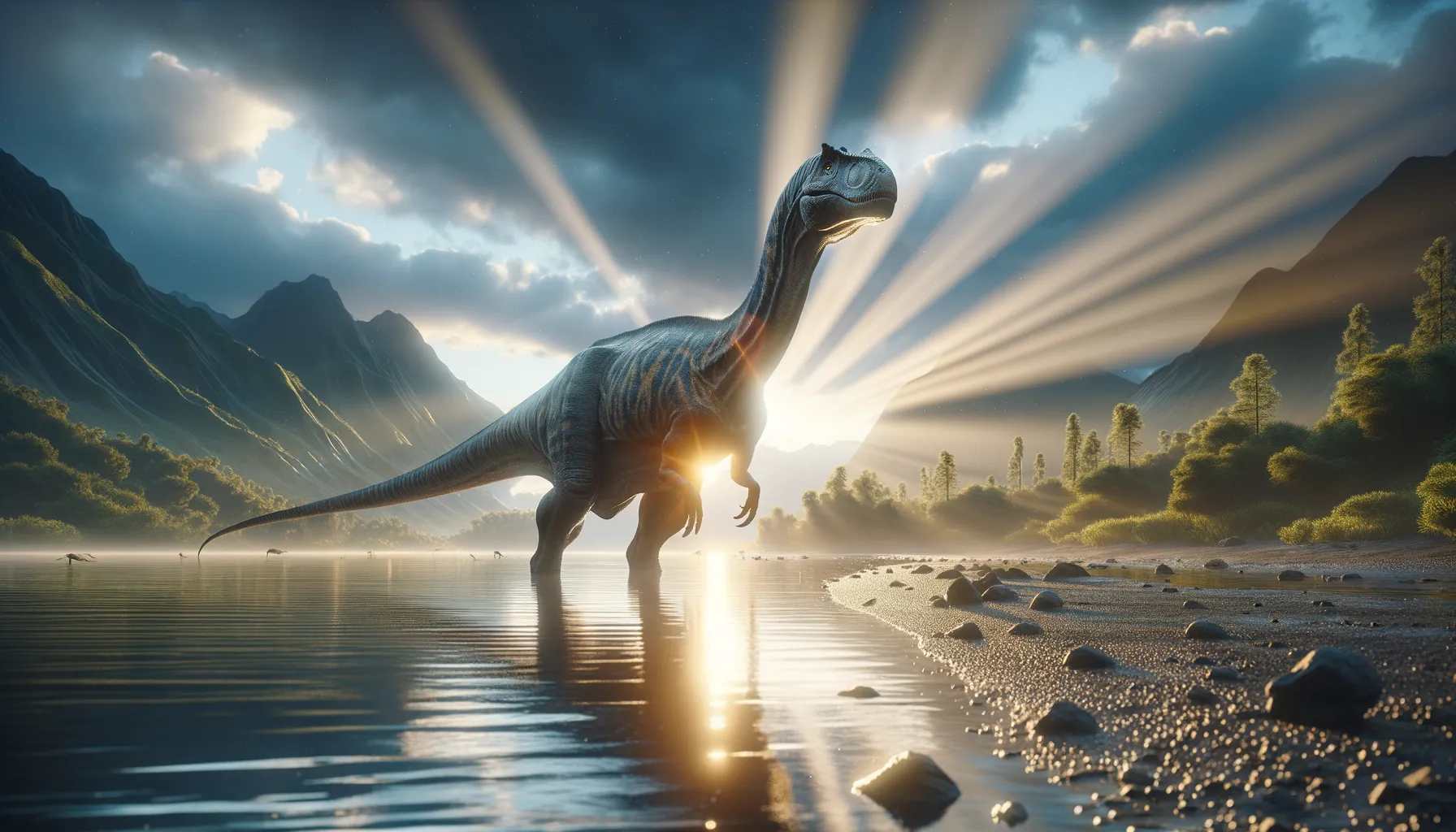
Mandschurosaurus
Unlocking the mysteries of ancient giants.
Period
Cretaceous
Length
About 30 feet long.
Height
Approximately 7 feet at the hips.
Weight
Around 3 tons.
Mandschurosaurus was a large, plant-eating dinosaur known for its long, flat beak and robust body. As one of the earliest discovered hadrosaurs, it played a crucial role in understanding the evolution of duck-billed dinosaurs. Its remains helped paleontologists learn about the diverse ecosystem of the Cretaceous period in Asia. With its sturdy build, it likely roamed ancient floodplains in search for food.
Diet
Mandschurosaurus was herbivorous, primarily feeding on a variety of plants. It likely consumed leaves, seeds, and fruits, using its beak-like mouth to grasp and chew vegetation. Its diet played a crucial role in supporting its large, strong body.
Hunting
As a herbivore, Mandschurosaurus did not hunt for food. Instead, it relied on its keen sense of smell to locate plant-rich areas. Its foraging behavior was crucial for sustaining its energy needs in a prehistoric environment.
Environmental challenges
Mandschurosaurus faced environmental pressures such as climate changes and competition for food resources. Adaptations like its robust teeth and beak helped it efficiently process tough vegetation. It also had to watch out for predators and find suitable habitats to thrive. Seasonal changes and habitat fragmentation could have also posed significant challenges for survival.
Speed
Moderate speed, suited for a large herbivore.
Lifespan
Possibly up to 70 years.
First discovery
Discovered in 1925 in northeastern China.
Fun Facts
- Mandschurosaurus was one of the first dinosaurs discovered in Asia, specifically in northeastern China.
- It lived during the Late Cretaceous period, about 70 million years ago.
- Mandschurosaurus was a duck-billed dinosaur, known for its flat snout resembling a duck's bill.
- This dinosaur was a herbivore, feeding on plants that grew along the rivers and forests of ancient Asia.
- At an estimated 8 meters long, Mandschurosaurus was a medium-sized dinosaur compared to other hadrosaurids.
- The name 'Mandschurosaurus' means 'Manchurian lizard' as it was discovered in the Manchuria region.
- Although not much is known about it due to limited fossil evidence, Mandschurosaurus provides crucial insights into dinosaur diversity in ancient Asia.
Growth and Development
Mandschurosaurus experienced gradual growth, indicating it needed several years to reach adulthood. Juveniles may have required protection from predators. Its development included shedding and replacing teeth to accommodate a plant-based diet. This ongoing dental renewal was essential for processing various vegetation types throughout its life.
Habitat
Mandschurosaurus inhabited floodplains and forested areas abundant in plant life. These regions offered food and water sources crucial for survival. Adapted to diverse environments, it could navigate different terrains, giving it access to a wide range of dietary options.
Interaction with other species
Mandschurosaurus likely coexisted with various herbivores and carnivores of its era. It may have formed herds for protection against predators. Interaction was limited to competition for resources and avoiding threats from predators.
Natural lifespan
Mandschurosaurus could often live up to 70 years in natural settings.
Reproduction
Mandschurosaurus likely used herd dynamics during breeding seasons for protection. It laid eggs in nests, which were possibly cared for until hatchlings emerged. Parental care could have played an essential role in early development and protection from predators.
Social behaviour
Mandschurosaurus may have lived in groups, aiding its defense against predators. Herding behavior could also facilitate locating ample food sources. Social structures within groups might have been complex, aiding in communication and survival.
Fossil locations
Fossils of Mandschurosaurus have been predominantly found in northeastern China. These remains were crucial for identifying and classifying the species accurately. Discoveries provided insights into the Cretaceous ecosystems of Asia.
